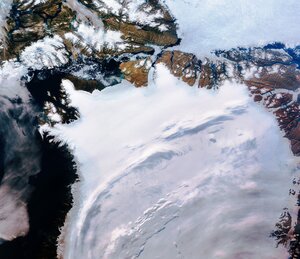Accept all cookies Accept only essential cookies See our Cookie Notice

About ESA
The European Space Agency (ESA) is Europe’s gateway to space. Its mission is to shape the development of Europe’s space capability and ensure that investment in space continues to deliver benefits to the citizens of Europe and the world.
Highlights
ESA - United space in Europe
This is ESA ESA facts Member States & Cooperating States Funding Director General Top management For Member State Delegations European vision European Space Policy ESA & EU Space Councils Responsibility & Sustainability Annual Report Calendar of meetings Corporate newsEstablishments & sites
ESA Headquarters ESA ESTEC ESA ESOC ESA ESRIN ESA EAC ESA ESAC Europe's Spaceport ESA ESEC ESA ECSAT Brussels Office Washington OfficeWorking with ESA
Business with ESA ESA Commercialisation Gateway Law at ESA Careers Cyber resilience at ESA IT at ESA Newsroom Partnerships Merchandising Licence Education Open Space Innovation Platform Integrity and Reporting Administrative Tribunal Health and SafetyMore about ESA
History ESA Historical Archives Exhibitions Publications Art & Culture ESA Merchandise Kids Diversity ESA Brand Centre ESA ChampionsLatest
Space in Member States
Find out more about space activities in our 23 Member States, and understand how ESA works together with their national agencies, institutions and organisations.
Science & Exploration
Exploring our Solar System and unlocking the secrets of the Universe
Go to topicAstronauts
Missions
Juice Euclid Webb Solar Orbiter BepiColombo Gaia ExoMars Cheops Exoplanet missions More missionsActivities
International Space Station Orion service module Gateway Concordia Caves & Pangaea BenefitsLatest
Space Safety
Protecting life and infrastructure on Earth and in orbit
Go to topicAsteroids
Asteroids and Planetary Defence Asteroid danger explained Flyeye telescope: asteroid detection Hera mission: asteroid deflection Near-Earth Object Coordination CentreSpace junk
About space debris Space debris by the numbers Space Environment Report In space refuelling, refurbishing and removingSafety from space
Clean Space ecodesign Zero Debris Technologies Space for Earth Supporting Sustainable DevelopmentApplications
Using space to benefit citizens and meet future challenges on Earth
Go to topicObserving the Earth
Observing the Earth Future EO Copernicus Meteorology Space for our climate Satellite missionsCommercialisation
ESA Commercialisation Gateway Open Space Innovation Platform Business Incubation ESA Space SolutionsLatest
Enabling & Support
Making space accessible and developing the technologies for the future
Go to topicBuilding missions
Space Engineering and Technology Test centre Laboratories Concurrent Design Facility Preparing for the future Shaping the Future Discovery and Preparation Advanced Concepts TeamSpace transportation
Space Transportation Ariane Vega Space Rider Future space transportation Boost! Europe's Spaceport Launches from Europe's Spaceport from 2012Latest
Old Arctic sea ice going down the drain
Thank you for liking
You have already liked this page, you can only like it once!
An ‘ice arch’ in the Lincoln Sea, part of the Arctic Ocean, acts as a bridge, holding back the older thicker sea ice. This arch normally breaks up in July, but this year it has disintegrated much earlier, allowing a southward flowing current to quickly flush away significant amounts of old, thicker sea ice through Nares Strait.
Nares Strait is a narrow channel of water that separates Greenland and Ellesmere Island in Canada. A significant amount of sea ice is pushed through this passage every summer and autumn. This year, however, the early collapse of the Lincoln sea arch, which normally hems in the ice until later, could mean that a greater proportion of the oldest and thickest Arctic sea ice is at risk of being lost.
Ice transport through Nares Strait contributes to ice loss from the Arctic Basin, though typically this is less than 10% of the ice that is exported through Fram Strait to the east of Greenland.
However, sea ice that is removed from the Lincoln Sea is some of the thickest and oldest ice in the Arctic. Consequently, Nares Strait ice export represents an important contribution to Arctic ice volume loss, and is critical to the survival of the perennial ice pack.
Using images captured by the Copernicus Sentinel-1 mission between the beginning of October 2016 and mid-May 2017, the animation shows large chunks or ‘floes’ of old ice effectively being ‘flushed down the drain’ at a considerable rate.
The animation also indicates sustained periods ice being transported north–eastward along the coast of Ellesmere Island, feeding thick old ice into the Lincoln Sea. This contributes to an overall reduction in the volume of Arctic sea ice and raises concerns about how Nares Strait exports ice in what is forecasted to be a record summer ice volume minimum. The summer minimum is reached in September.
-
CREDIT
contains modified Copernicus Sentinel data (2016–17), processed by DTU Space -
LICENCE
ESA Standard Licence
-
Animation
-
-
-
-
-

Giant iceberg enters Nares Strait

Alert, Canada

Ellesmere Island and northwestern Greenland

Bering in dire straits















 Germany
Germany
 Austria
Austria
 Belgium
Belgium
 Denmark
Denmark
 Spain
Spain
 Estonia
Estonia
 Finland
Finland
 France
France
 Greece
Greece
 Hungary
Hungary
 Ireland
Ireland
 Italy
Italy
 Luxembourg
Luxembourg
 Norway
Norway
 The Netherlands
The Netherlands
 Poland
Poland
 Portugal
Portugal
 Czechia
Czechia
 Romania
Romania
 United Kingdom
United Kingdom
 Slovenia
Slovenia
 Sweden
Sweden
 Switzerland
Switzerland

























